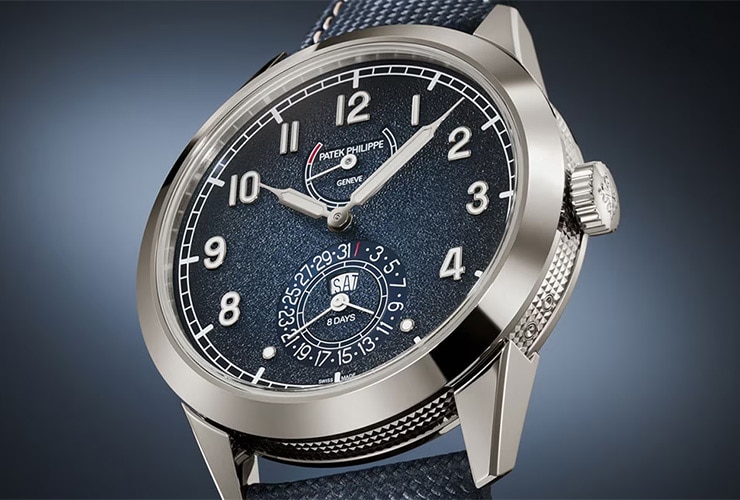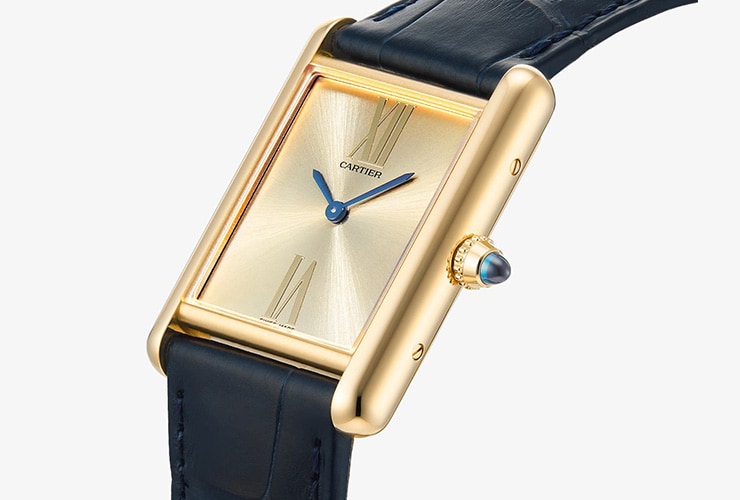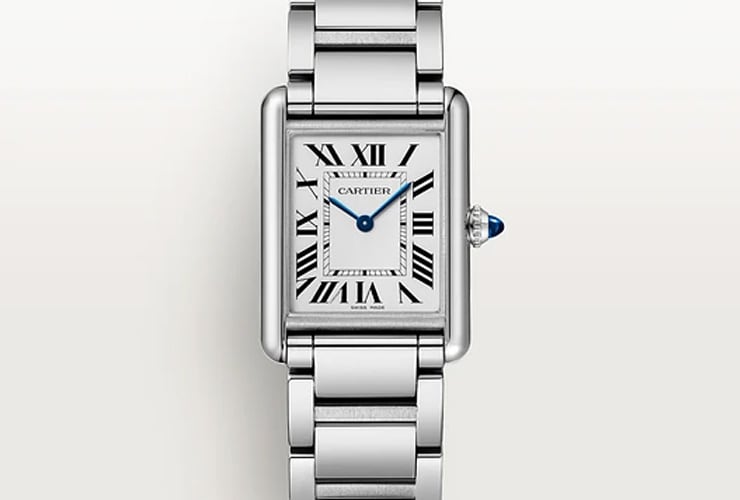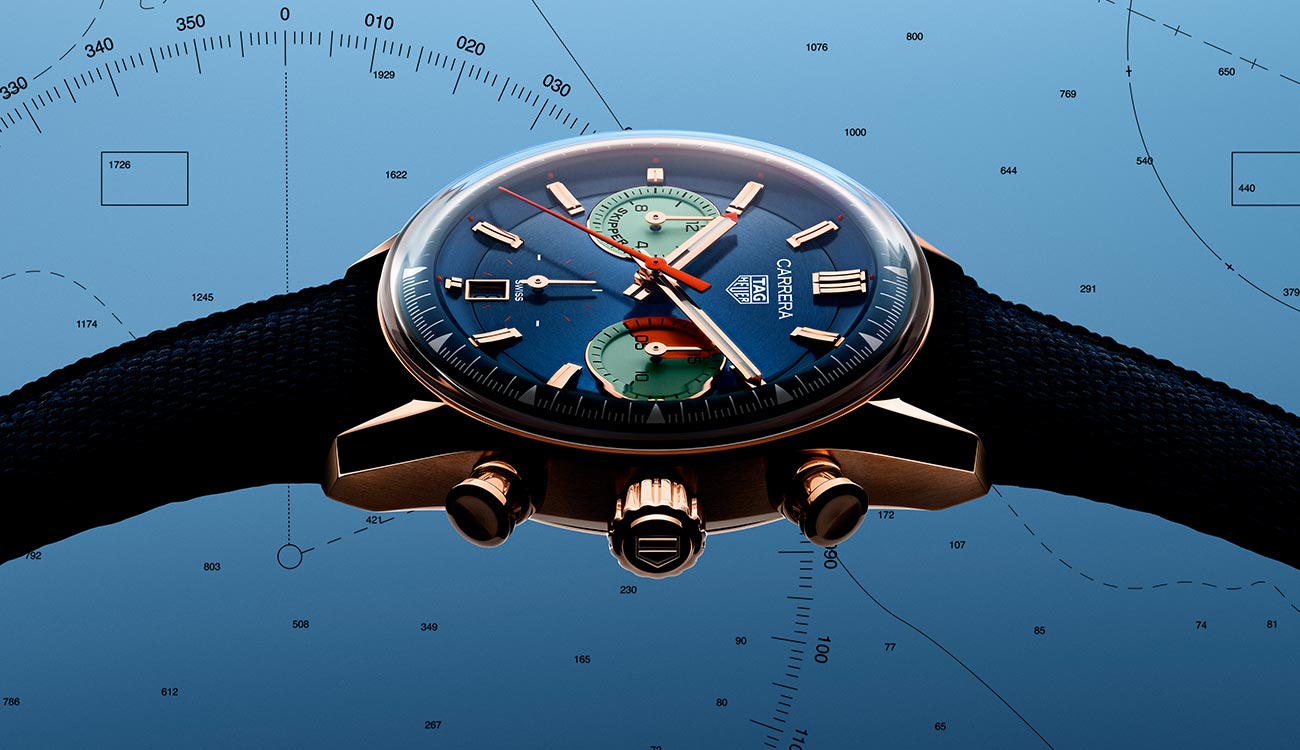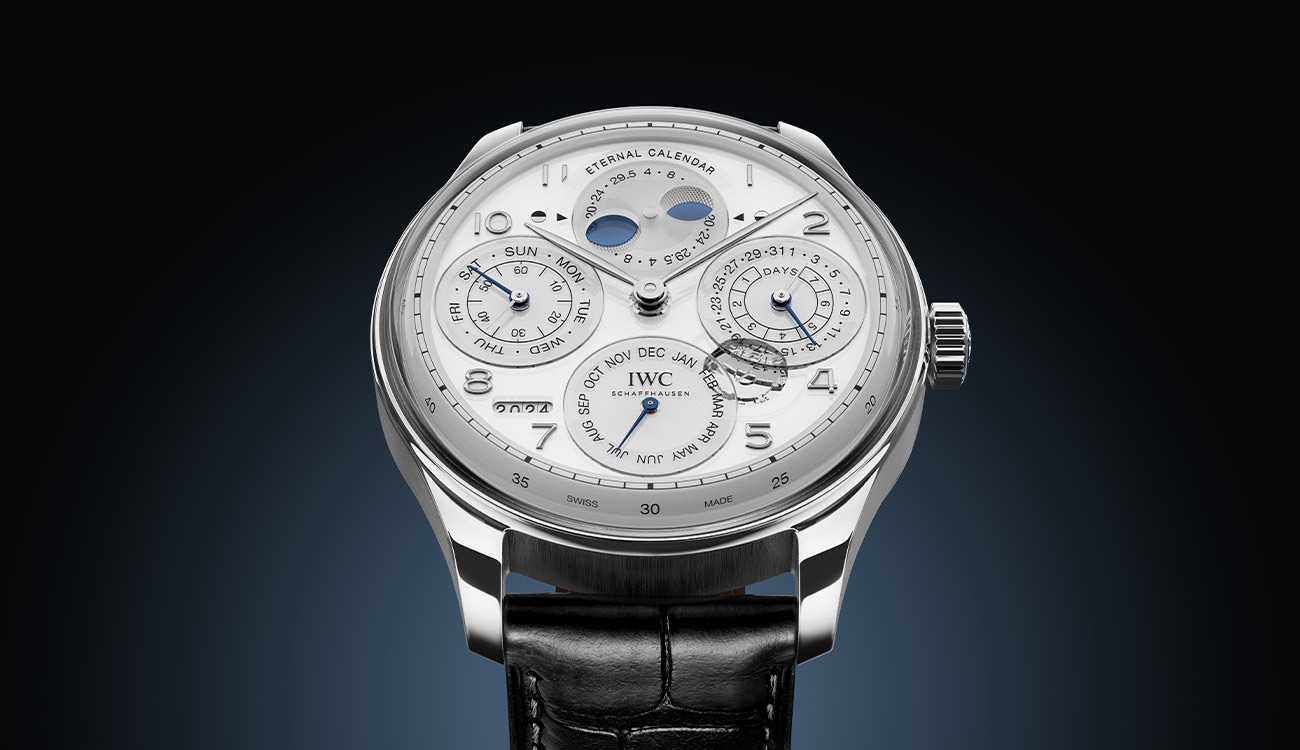The Calibre A-Z Of Luxury Timepiece Terminology
By Sarah Jayne Potter | 5 minute read

The world of haute horlogerie comes with a vernacular that, on the surface, can look complicated to comprehend. The good news however, is that the more time you spend researching and reading about luxury watches, the more these terms will roll off the tongue and feel like a natural second language.
To guide you on your way to luxury watch terminology perfection, we’ve created an A-Z guide of the most important and frequently used vocabulary from the world of watches.
Analogue display
An analogue display is a traditional clock face with hands to show the time, as opposed to a digital display.
Aperture
The aperture is the window on the dial that displays complications such as the day, date, or moon-phase.
Balance
Also known as the ‘balance wheel’, the balance is a timekeeping device within a mechanical watch. It’s a weighted wheel that rotates back and forth, working in the same way as a pendulum does within a pendulum clock.
Bracelet
The bracelet is a metal version of a watch’s strap, which holds the watch to the wrist.
Calibre
The calibre is another name for the watch’s movement. This is the engine to a timepiece that powers the hands and complications. See also movement.
Chronograph
A chronograph is a type of watch that is used as a stopwatch, as well as for telling the time. A chronograph complication relies on the use of a stopwatch for its functionalities.
Complication
A complication is any function on a watch that goes beyond telling the time, such as alarms, tourbillons and time zones.
Crown
A crown is the button on the outside of the watch case that sets the time and date. It can also be used to wind the mainspring on mechanical watches.
Crystal
The crystal is a transparent cover that protects the dial and can reduce glare. They are typically made of glass or plastic.
Cyclops
A cyclops is a magnifying lens that is found on the crystal of some watches, most notably Rolex as they pioneered the feature. They typically magnify the complication underneath by 2.5 times.
Dial
The dial is the ‘face’ of the watch that displays the hour markers and hands.
Digital display
A digital display features the time written in numerals on an LCD screen, as opposed to an analogue display.
Diving watch
Diving watches tend to feature a dial that’s uncluttered and high contrasting, as they need to be legible underwater and in low light. The vast majority also tend to feature a rotatable bezel for timing a dive. To be called a ‘diving watch’ they must feature a water resistance greater than 330ft.
Dress watch
Dress watches are designed to be worn with formal attire, although nowadays it’s common for them to be paired with semi-formal and casual business wear. They are fuss-free and elegant, with minimal complications on display.
Field watch (military watch)
Field watches – also known as military watches – are typically robust and crafted from impact-resistant material, as they were originally designed for timekeeping under tough physical conditions. They tend to feature high luminosity and a more muted colour palette.
Haute horlogerie
Haute horlogerie translated into English means the “high-art of watchmaking” and represents the highest standard in watchmaking. The term was first established in the 1970s to distinguish high-end, intricately made mechanical timepieces from mass-produced quartz watches.
Ligne
The ligne is a historic French measure that is still used within the world of haute horology, specifically to measure movements. It is equivalent to 2.256mm.
Mechanical movement
The movement – also known as the calibre – is the engine to your timepiece, powering both the hands on the dial and all complications. Manual mechanical movements must be wound by hand and automatic mechanical movements are powered by the movement of your wrist.
Military watch
See field watch.
Pilot watch
Pilot watches need to be highly legible and easy to operate, making them more of a practical timepiece. Simplistic in style and larger than most other watches, they pair well with a casual business look.
Power reserve indicator
The power reserve indicator tells the wearer how much energy the watch has in the mainspring. This equals the amount of time the movement can continue to run without needing to be wound.
Quartz movement
A quartz movement uses batteries as its main power source. The battery sends electricity through an integrated circuit to a quartz crystal. The electric charges make the crystal vibrate and those pulses are then sent through an integrated circuit to the stepping motor. This transforms the electrical impulses into mechanical power.
Racing watch
A racing watch is defined by two particular complications: a chronograph – which is a stopwatch function – and a tachymeter – which tracks travel time or measured distance, based on speed. Visually, racing watches tend to come in more exotic colour and style options.
Repeater
Repeaters use sound to help a wearer understand what time it is, making them particularly useful for visually imparied people or those telling the time in the dark. A slide lever on the watch case must be pressed for the timepiece to then sound a series of chimes. A minute repeater calls out the hours, quarters, and minutes, while a quarter repeater sounds only for hours and quarters.
Shock absorber
A shock absorber helps a watch cope with jolts – from a knock or drop – to the movement, particularly protecting the pivots that hold the balance wheel in place.
Sports watch
A sports watch is designed to handle the most active situations by being durable, easily legible, and resistant to scratches. They are also usually water resistant, come with a shock absorber, and tend to feature rubber straps as these are the most comfortable for high-intensity activities.
Swiss-made
To be called Swiss-made is to give a timepiece a seal of quality. Switzerland is widely regarded as the home of haute horlogerie owing to a heritage of technical and stylistic excellence. To be considered Swiss-made, at least 60% of a timepiece’s manufacturing costs must be generated in Switzerland.
Strap
The strap is any non-metal band that holds the watch to the wrist, most commonly made out of leather or rubber. See also bracelet.
Tachymeter
A tachymeter is used for measuring speed. A scale is marked around the outside of the dial or inner bezel and tracks travel time or measured distance, based on speed. It typically uses units per hour in miles or kilometers.
Tourbillon
The tourbillon aims to increase accuracy by improving the balance of a watch. This is a complication that is held in high regard owing to its rarity and the time and skill needed to create it.
Water resistance
All timepieces come with a water-resistance rating however, those without an indication of water depth signify that the watch can only endure splashes of water. To be called a diving watch a timepiece must feature a water resistance greater than 330ft.
Winding
Winding is a necessary function required in order to power a timepiece and keep it in optimal working order. There are two types of winding, the first is manual which is done by hand via the crown in a singular direction. The second is automatic, which is powered by the kinetic energy stored from the natural motions of the wearer’s body.
© 2025 Watches of Switzerland
Watches of Switzerland is a trading name of Watches of Switzerland Company Limited. Registered Office: Aurum House, 2 Elland Road, Braunstone, Leicester, LE3 1TT, Registered in England and Wales, Company number 00146087. Registered VAT Number 834 8634 04. Watches of Switzerland Company Limited acts as a broker and not a lender and offers finance from Secure Trust Bank PLC trading as V12 Retail Finance and PayPal UK Ltd, 5 Fleet Place, London, United Kingdom, EC4M 7RD trading as PayPal Credit. Watches of Switzerland Company Limited is authorised and regulated by the Finance Conduct Authority. Our registration number is 308710. *Credit is provided subject to affordability, age and status. Minimum spend applies. Terms and Conditions apply. UK residents only. Not all products are regulated by the Financial Conduct Authority and FOS protection will not be extended to unregulated agreements. Please note the Consumer Credit Act states that should your purchase / loan amount cost more than £30,000 you will not be covered under Section 75 of the Consumer Credit Act.
*Next day delivery available on most items. See product pages for more information.

